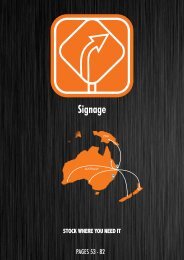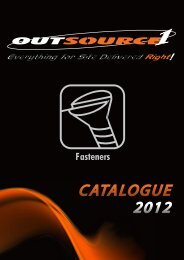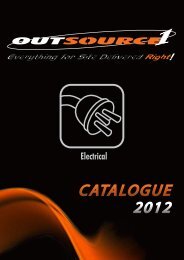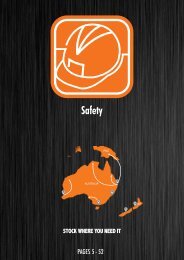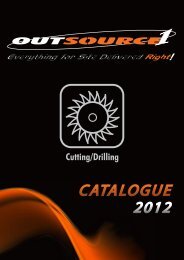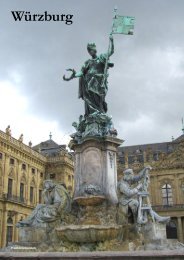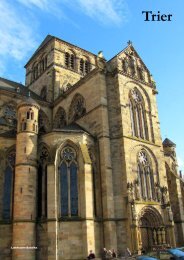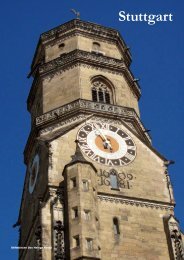Raven Guides: Germany - Regensburg
- No tags were found...
You also want an ePaper? Increase the reach of your titles
YUMPU automatically turns print PDFs into web optimized ePapers that Google loves.
<strong>Regensburg</strong><br />
Dom St Peter
<strong>Regensburg</strong><br />
The city’s Roman remains, its<br />
medieval churches, including<br />
one of <strong>Germany</strong>’s great Gothic<br />
cathedrals, rare Italian-style tower<br />
houses and narrow lanes make up<br />
a precious heritage.<br />
The Roman legionary camp Castra Regina<br />
(named after the Danube’s confluence with the<br />
river Regen) gave <strong>Regensburg</strong> its name. The<br />
walled and gated camp, built at the direction<br />
of the 2nd century emperor Marcus Aurelius,<br />
followed the Celtic settlement Radasbona<br />
or Ratisbona and a cohort castle built for<br />
Vespasian. It was clearly important then – and<br />
under the Bavarian dukes of the 6th century<br />
– but more so under the Carolingians as capital<br />
of the eastern Frankish kingdom and an<br />
imperial seat in the 9th century. A bishopric<br />
was founded in 739 and contemporary graves<br />
(and older) are beneath the St Emmeram<br />
monastery church.<br />
The established Danube trade route was<br />
crossed by a north-south route and in the 12th<br />
century the only medieval bridge over the<br />
river was built here, giving the city a pivotal<br />
role in trade and portage north of the Alps.<br />
Its network of connections included Italy,<br />
Bohemia, Byzantium and Russia. A monopoly<br />
over the regional salt trade from Passau<br />
confirmed <strong>Regensburg</strong>’s strategic position and<br />
by 1245, when it became a free imperial city<br />
under the Holy Roman emperor, it was rich,<br />
powerful and a cultural melting pot. Despite<br />
its affluence, the commercial patriciate was<br />
forced by lack of space to build directly up –<br />
for storage rather than living areas. The result<br />
was tower houses more than 40m high.<br />
The philosopher and theologian Albertus<br />
Magnus, a forerunner of the Classical revival,<br />
taught at the Dominican monastery of St<br />
Blasius and was for a few years bishop of<br />
<strong>Regensburg</strong>.<br />
After this heyday <strong>Regensburg</strong> lost much<br />
of its commercial influence to Augsburg<br />
and Nuremberg. In 1519 its strong Jewish<br />
community, which had been part of its success<br />
since at least the 980s, was expelled and later<br />
the Jewish quarter around Neupfarrplatz was<br />
destroyed. Jews were not allowed to return<br />
for 150 years. The Reformation arrived in<br />
1542, marking the city out from many in the<br />
southern German lands.<br />
The city became seat of the imperial diet<br />
or Reichstag in 1663 and kept that title until<br />
the empire’s dissolution in 1806. The city<br />
was represented by the princes von Thurn<br />
und Taxis, from 1595 to 1867 operators of the<br />
imperial and national post, who took over the<br />
castle of St Emmeram in 1812.<br />
<strong>Regensburg</strong> has the rare distinction of<br />
having its old town, and the medieval Danube<br />
bridge world heritage listed by UNESCO.<br />
A post-World War II policy of restoring and<br />
preserving its built environment is recognised<br />
in its listing, which includes Stadtamhof<br />
across the river.<br />
Altstadt<br />
The past is evident close to the Hauptbahnhof.<br />
To the east of Maximilianstraße at Ernst-<br />
Altes Rathaus was the venue for imperial assemblies for almost 150 years.<br />
Reuter-Platz are exposed remains of Castra<br />
Regina. Closer to the river, the street reaches<br />
Alter Kornmarkt, where the ambience is<br />
medieval. The ducal residence Herzoghof, with<br />
10th century provenance and Romanesque<br />
windows, is joined by a buttressing arch to a<br />
Carolingian square tower. The Alte Kapelle to<br />
the south of the square preserves parts of a 9th<br />
century basilica.<br />
Niedermünstergasse leads north to Unter<br />
den Schwibbögen and to the west the remains<br />
of a Roman tower are visible with the simple<br />
stone arch of the Porta Praetoria gate next to it.<br />
Gothic style dominates the streets and<br />
facades of the old city centre. Some of<br />
the more colourful street names belong to<br />
inns that stood there and other names of<br />
RAVEN QUICK GUIDE<br />
Tourist information: Rathausplatz 4 (tel 0941-5074410, M-F 9-18, Sa 9-16, Su 9.30-16);<br />
Salzstadel, Weiße-Lamb-Gasse 1 (M-Su 9-19).<br />
Accommodation service: Rathausplatz 4 (tel 0941-5074410, email tourismus@<br />
regensburg.de, M-F 9-18, Sa 9-16, Su 9.30-16)<br />
Money: Sparda-Bank Ostbayern, Weichser Weg 5 (M-F 9.30-18); HypoVereins Bank,<br />
Hemauerstraße 1 (M-W 9-16.30, Th 9-17.30, F 9-16).<br />
Lockers: Hauptbahnhof ground level (€4/2 per day).<br />
Transit information: RVV Kundencentrum, Hemauer Straße 1 (M-F 8-18).<br />
Post: Bahnhofstraße 16 (M-F 8-18.30, Sa 8-12.30); Domplatz 3 (M-F 9.30-18, Sa<br />
9.30-12.30).<br />
Internet: Lok.in, Hauptbahnhof upper level (M-F 6-23, Su 7-23); Tourist information,<br />
Rathausplatz 4 (M-F 9-18, Sa 9-16, Su 9.30-16).<br />
Laundry: Waschsalon <strong>Regensburg</strong>, Ostengasse 3 (M-Sa 6-22); Waschsalon+Bügelservice,<br />
Hofgartenweg 4 (M-Sa 6-23).<br />
Police: tel 110; Minoritenweg 1 (tel 0941-5062122).<br />
Pharmacy: Arcaden Apotheke, Friedenstraße 23 (M-Sa 8-20); Dom Apotheke, Am<br />
Frauenbergl 2 (M-F 8.30-18.30, Sa 9-18).<br />
Ambulance: tel 112.<br />
Hospital: Krankenhaus Barmherzige Brüder, Prüfeninger Straße 86 (tel 0941-3693501).<br />
narrow lanes and squares reveal the trading<br />
operations of the past. Past Krauterermarkt<br />
is the old commercial quarter marked by<br />
the tower houses. On Goliathstraße is the<br />
Goliathhaus with its painting of David’s<br />
great battle and (circling into Watmarkt) the<br />
tower of the Baumburgerhaus. Back through<br />
Krauterermarkt to the east is Domplatz<br />
with the soaring spires of the cathedral.<br />
Residenzstraße leads south to Neupfarrplatz<br />
with the Neupfarrkirche in the centre and at<br />
the west end Wahlenstraße leads north past the<br />
Goldener Turm.<br />
West of Kohlenmarkt is Rathausplatz with<br />
the old Rathaus complex and further west is<br />
Haidplatz, where another patrician house,<br />
Goldenes Kreuz, was an inn for the rich<br />
© 2014 RAVEN TRAVEL GUIDES GERMANY<br />
RAVEN TRAVEL GUIDES GERMANY - <strong>Regensburg</strong> 1
and powerful from the late medieval period<br />
(much as its neighbour Die Arch is now). It<br />
functioned for a time as an imperial residence<br />
and the emperor Charles V is claimed to have<br />
there conceived Don Juan. Neue Waag at the<br />
square’s east end was where the city’s standard<br />
scales were set up in the 15th century.<br />
North along Weingasse lies the river front.<br />
The houses to the east on Keplerstraße, such as<br />
Blauer Hecht at No 7 (and the adjacent Kepler<br />
Haus lived in by the astronomer Johannes<br />
Kepler until his death) were other residences<br />
built by the commercially successful close to<br />
the river port. East of Fischmarkt is the clock<br />
tower of the Brückturm, marking Steinerne<br />
Brücke over the Danube.<br />
Information<br />
The tourist information office is in the Altes<br />
Rathaus building at Rathausplatz 4 and online<br />
at www.regensburg.de/tourismus. From November<br />
to March the office is open only to 14.30<br />
Sundays but during the December Christmas<br />
markets stays open Saturdays until 18.00.<br />
The Besucherzentrum Welterbe office at the<br />
Salzstadel at the city end of Steinerne Brücke<br />
(M-Su 9-19) can also provide assistance.<br />
The Domplatz 5 centre (Apr-Oct M-Sa<br />
9-18, Su 13.30-14.30, Nov-Mar M-Sa 10-<br />
The Brückturm<br />
with its clock<br />
is the last<br />
survivor of<br />
the Steinerne<br />
Brücke<br />
towers.<br />
17, Su 13.30-14.30) at that address is no<br />
tourist office, being basically a Catholic<br />
pastoral and information point, but has details<br />
about diocesan churches that can be visited,<br />
some free literature including pilgrimage<br />
The Dom St Peter is one of the great<br />
Gothic cathedrals of <strong>Germany</strong> and,<br />
like Cologne, took hundreds of years<br />
to complete. Started about 1250, it was<br />
largely Gothic with part of an earlier<br />
Romanesque tower. It was given a<br />
Baroque makeover in the 17th century<br />
but was returned to Neogothic in the<br />
mid 19th century and was finished at<br />
the beginning of the Prussian empire<br />
in 1871. The stained glass is<br />
contemporary with the building’s<br />
earliest stages. It has towers 105m high<br />
and is full of precious artworks, the<br />
statues including the smiling angel<br />
Gabriel (1280) on the pillars before<br />
the main altar being especially valued.<br />
The remains of the Romanesque<br />
cathedral have been found in the crypt,<br />
where there are episcopal graves and<br />
a burial of 257 nameless medieval<br />
skeletons. A new organ was<br />
commissioned in 2009 and is played<br />
weekdays at noon. The cathedral<br />
information centre (May-Oct M-Sa<br />
9-18, Su 13.30-14.30, Nov-Apr M-Sa<br />
9-17, Su 13.30-14.30) is at Domplatz<br />
5. The cathedral is open daily (Apr-Oct M-Su 6.30-18, Nov-Mar 6.30-17) except for<br />
services. Take bus A (M-F) to Domplatz or bus 1, 2A/B, 4, 6 or 11 to Thundorfer Straße.<br />
The 13th century St-Ulrichs-Kirche<br />
at Domplatz 2, now the diocesan<br />
museum, was erected behind the<br />
Domgarten as the cathedral parish<br />
church. The earliest artworks inside<br />
date from the 11th century. The wall<br />
paintings (c1570) are in an excellent<br />
state of preservation although recent<br />
restoration work on the outer church<br />
has been necessary. These works were<br />
expected to be completed by mid<br />
2014. Take bus A (M-F) to Domplatz<br />
or bus 1, 2A/B, 4, 6 or 11 to<br />
Thundorfer Straße.<br />
information and books (several in English).<br />
The book <strong>Regensburg</strong>: A guide to the<br />
UNESCO world heritage city (€6.90) by<br />
Heidemarie Böcker is for sale at the tourist<br />
office and excellent for a deeper understanding,<br />
including walking tours. There is even more<br />
depth in Schnell & Steiner’s weightier World<br />
Heritage <strong>Regensburg</strong> (€12.90) by Eugen Tapp.<br />
Freytag & Berndt (M-F 10-19, Sa 9.30-<br />
18) at Kohlenmarkt 1 has a strong array<br />
of maps and some guidebooks in English.<br />
Dombuchhandlung at Domplatz 7 has basic<br />
books about <strong>Regensburg</strong> in English but to<br />
dig a little deeper try Books in a Box (M-Su<br />
9-20) on two floors at Goldene Bären Straße<br />
12 (enter Brückstraße). A Hugendubel store<br />
is downstairs in the <strong>Regensburg</strong> Arcaden at<br />
Friedenstraße 23.<br />
Transport<br />
Fast trains arrive from Vienna/Wien, Passau<br />
(several times daily, about one hour) or both.<br />
Servicing Nuremberg are hourly expresses<br />
(about one hour) as well as hourly regional<br />
trains. Agilis trains to Plattling (change for<br />
Deutsche Bahn services) provide further<br />
connections to Passau. Extra Nuremberg<br />
services are available through the VGN S-Bahn<br />
network (change at Neumarkt). Agilis trains<br />
also service Ingolstadt. Reaching Amberg<br />
mostly requires a change at Schwandorf.<br />
DB fast connections to and from Munich<br />
require a change at Ingolstadt. Regional trains<br />
run by the Alex concern also run to and from<br />
Munich (about 90 minutes). Alex trains to and<br />
from Prague/Prag (four hours, 20 minutes) run<br />
four times daily via Plzeň/Pilsen.<br />
The DB Reisezentrum (M-F 6.10-18.45, Sa<br />
8-18, Su 8-16.30) is on the upper level of the<br />
Hauptbahnhof but the information counter is<br />
open until 22.30 (M-Su).<br />
Long-distance buses use stops in<br />
Bahnhofstraße west of the Hauptbahnhof.<br />
DB’s IC Bus travels Prague-Munich via Plzeň<br />
and <strong>Regensburg</strong> twice daily (W-M). FlixBus<br />
offers a similar service once daily (W-M).<br />
Berlin Linien Bus runs Berlin-Leipzig-<br />
Passau-Bad Füssing twice weekly via Hof<br />
and <strong>Regensburg</strong>, providing Deggendorf and<br />
Passau services (W & Sa) and Berlin and<br />
Leipzig links (Th & Su).<br />
Urban transit: RVV operates bus and local<br />
train services in and around the city. The inner<br />
two zones of the RVV network cover the city<br />
and immediate area and single journeys (tickets<br />
from machines or bus drivers only) cost €2.10<br />
(zone 1) and €2.90 (zones 1 and 2) for adults<br />
and €1.10 and €1.50 for children aged 6-15.<br />
Tickets for the inner city only cost €1.10 (valid<br />
for one hour) for single journeys and €2.50 for<br />
a day. Most other tickets are cheaper when<br />
purchased in advance and weekday day tickets<br />
covering the two zones cost €4.80 prepaid,<br />
€6.40 from bus drivers (valid for two people<br />
after 9.00). For a day’s travel in the inner two<br />
zones for up to five people at weekends or<br />
on holidays there is a €4.10 ticket available<br />
prepaid or from bus drivers, but this incurs €1<br />
extra per person after 1.00.<br />
Local buses converge on the stops in<br />
Albertstraße near Maximilianstraße, nearby<br />
at Ernst-Reuter-Platz and in Bahnhofstraße<br />
and adjacent streets. The Altstadt bus A<br />
(M-F 9-20.30) links central city attractions,<br />
running from outside the Hauptbahnhof down<br />
Maximilianstraße to Alter Kornmarkt and<br />
Domplatz before completing an anticlockwise<br />
<strong>Regensburg</strong> 2 - RAVEN TRAVEL GUIDES GERMANY
Remains of the walls of the Castra<br />
Regina legionary camp built for<br />
Marcus Aurelius from the year 179<br />
are exposed for inspection where<br />
they were excavated at<br />
Ernst-Reuter-Platz east of<br />
Maximilianstraße. The walls,<br />
designed to protect 6000 soldiers,<br />
were strengthened about 300 and the<br />
city grew up largely within them,<br />
though the later medieval walls were<br />
built around a larger circuit. A gate<br />
slab from one of the portals is in the<br />
Reichstadtmuseum.<br />
The 12th century Niedermünsterkirche in<br />
Niedermünstergasse has a much older history. The site<br />
has remains of Castra Regina and churches were built<br />
there soon after the Romans’ departure in the<br />
5th century. Early in the 8th century Frankish bishop<br />
St Erhard was buried in the so-called Pfalzkapelle and<br />
soon after the Bavarian duke Theodo was interred there.<br />
His 10th century successor Henry I followed and his<br />
widow Judith founded a convent for women of noble<br />
status before herself being laid to rest there. The Roman<br />
and medieval archaeology beneath can be toured (twice<br />
weekly, see Museums). Take bus A (M-F) to Domplatz<br />
or bus 1, 2A/B, 4, 6 or 11 to Thundorfer Straße.<br />
The proud Ostentor (c1300) on Ostengasse was the<br />
gate through <strong>Regensburg</strong>’s medieval wall to Passau,<br />
Austria and eastern Europe and today at five storeys<br />
is the best representative of the power of the medieval<br />
fortifications. It contained the Ostenvorstadt artisans’<br />
quarter, characterised by smaller buildings and inns.<br />
It is probable that much of the critical salt supply,<br />
which had to be hauled upstream from Passau, came<br />
through this gate. Take buses 5 or 10 to Gabelsberger<br />
Straße. Today its counterpart the Jakobstor, at Platz<br />
der Einheit at the west end of the city, is much less<br />
imposing.<br />
The Alte Kapelle (875) at Alter Kornmarkt started<br />
as a Romanesque Carolingian basilica built by the<br />
Frankish king Ludwig ‘the German’ but the choir<br />
was built in the 15th century and chapels were<br />
added later. The rich Rococo ceiling frescoes<br />
provide a stark contrast. Local traditions suggest<br />
the church is on the site where Christianity was<br />
introduced to Bavaria, although a Roman church<br />
might also have stood here. Certainly<br />
Roman-period stone went into the construction.<br />
The frescoes are by Christoph Thomas Scheffler<br />
and the stucco by Anton Landes. Take bus A<br />
(M-F) to Domplatz or bus 1, 2A/B, 6, 11 or 13 to<br />
Dachauplatz.<br />
The Porta Praetoria on Unter den Schwibbögen,<br />
former north gate of the Roman the legionary base<br />
Castra Regina, probably would have had a similar<br />
appearance to Trier’s Porta Nigra – without its size.<br />
The remains today, a simple stone arch with part of a<br />
circular bastion, can be compared with a model in the<br />
Reichstadtmuseum. In this area the line of the Roman<br />
fortifications can be recognised in later buildings. The<br />
Danube was a frontier for Rome and Castra Regina<br />
provided part of its northern shield against the<br />
tribes of Germania. Take bus 1, 2A/B, 4, 6 or 11 to<br />
Thundorfer Straße or bus A (M-F) to Domplatz.<br />
circuit via Haidplatz, Arnulfsplatz, Bismarckplatz<br />
and Neupfarrplatz and returning to<br />
the Hauptbahnhof via Domplatz and Maximilianstraße.<br />
Prepaid tickets can be bought from RVV<br />
Kundencentrum (M-F 8-18) at Hemauer<br />
Straße 1. The tourist information office also<br />
sells RVV bus tickets. The Kundenzentrum<br />
provides information and timetables but some<br />
details and tickets are available from the<br />
Hauptbahnhof DB Reisezentrum.<br />
Long-distance cyclists using the Donauradweg<br />
trail along the Danube cross the river<br />
at Steinerne Brücke. Bicycle paths in some<br />
areas are shown only by a difference in the<br />
paving. Bikehaus (M-Sa 10-19, also open<br />
Sundays Apr-Sep) on Bahnhofstraße at the<br />
west end of the Hauptbahnhof has bicycles for<br />
rent at €13 for one day (or €12 per day for two<br />
days or more).<br />
Taxis (tel 0941-19410 or 0941-52052)<br />
queue outside the Hauptbahnhof in Bahnhofstraße.<br />
<strong>Regensburg</strong>CARD<br />
The <strong>Regensburg</strong>CARD (€9 for 24 hours),<br />
available at the tourist office, covers travel by<br />
bus and local trains for zones 1 and 2 of the<br />
RVV transit network. The two-day card (€17)<br />
covers travel in zones 1-5. Family cards for two<br />
adults and up to three children under 14 cost<br />
€20 and €35 respectively. The card also brings<br />
concessions on tours (the city tour is reduced<br />
by €3), cruises and typically 10% on some<br />
museum admissions (Reichstagsmuseum,<br />
Kepler Haus, Document Neupfarrplatz) and<br />
free coffee with meals at some restaurants.<br />
Tours<br />
There are 90-minute Wednesday and Saturday<br />
Altstadt tours (May-Oct and during Christmas<br />
markets) in English (€8/5, families €19) by<br />
tourist train from outside the cathedral in<br />
Domplatz. Tickets are available there and<br />
at the tourist information office. An audio<br />
commentary for a self-guided tour can be<br />
hired for three hours (€8, additional hours<br />
€1.50 each) from the tourist office.<br />
The bilingual pamphlet Jewish Sites in<br />
<strong>Regensburg</strong> provides a map and notes for a<br />
short tour of Jewish sites including the former<br />
and present city cemeteries.<br />
Cruises<br />
Donauschiffahrt Wurm+Köck at Thundorfer<br />
Sraße 6 east of Steinerne Brücke (Apr-Oct<br />
M-Su 10-16) runs five 45-minute sightseeing<br />
tours daily (Apr-Oct Sa-Th, €8.50). There<br />
are three daily 45-minute cruises to the wharf<br />
at Donaustauf just below the Walhalla site<br />
(May-Sep Tu-Sa, €12.50/6.40), return trips<br />
(€13.80/6.90) allowing two or four hours at<br />
the monument. The same cruises are available<br />
twice daily for three weeks in December (Th-<br />
Su). For details and dates of occasional round<br />
trips to Passau (€36) and special cruises visit<br />
www.donauschiffahrt.de.<br />
Personen-Schifffahrt Klinger (www.<br />
schifffahrtklinger.de) at Thundorferstraße<br />
(Apr & Oct M-Su 10-15, May-Sep M 9.45-<br />
16, Tu-Su 9-16) also runs Walhalla round<br />
trips twice daily (May-late Oct, €8.50 single,<br />
€12.50 return, concession and family tickets<br />
available). There are also novelty cruises.<br />
Views<br />
The tower of the Dreieinigkeitskirche (May-<br />
RAVEN TRAVEL GUIDES GERMANY - <strong>Regensburg</strong> 3
In the tower houses known locally as<br />
Geschlechtertürme – which the wealthy families<br />
called home – the upper levels were not<br />
inhabited. They were used for storage and goods<br />
were winched up from courtyards below. Towers<br />
were also defensible. The 42m Goldener Turm or<br />
Haymohaus (c1260, nine storeys) at Wahlenstraße<br />
14, with a Romanesque courtyard reaching through<br />
to Untere Bachgasse, and the Baumburger Turm<br />
(seven storeys) at Watmarkt 4 are the tallest. At<br />
many other houses (such as the Kastenmayer Haus<br />
at Wahlenstraße 22) storeys have been removed<br />
over time. Take bus A (M-F) to Altes Rathaus or<br />
bus 1, 2A/B, 4, 6 or 11 to Fischmarkt.<br />
The buildings of the Altes Rathaus at Rathausplatz<br />
were once the focus of more than city affairs. The<br />
imperial diet or Reichstag met in the upper hall of the<br />
Reichsaalbau (1360) from 1663 until 1806, trying to<br />
resolve complex issues involving the hundreds of separate<br />
states and jurisdictions that made up the Holy Roman<br />
empire. Today it is interesting to study the seating plan.<br />
The diversity is neatly represented at the portal of the<br />
adjacent corner stairwell – the local standards for length<br />
measurement including foot (here ‘Schuch’), which before<br />
the 19th century varied throughout <strong>Germany</strong>. The<br />
tapestried hall, adjacent chambers and the cells below<br />
can be toured (see Museums). Take bus A (M-F) to Altes<br />
Rathaus or bus 1, 2A/B, 4, 6 or 11 to Fischmarkt.<br />
The Goliathhaus at Goliathstraße 4 is another<br />
tower house but also has a fresco (1573) by<br />
Melchior Bocksberger, the surviving <strong>Regensburg</strong><br />
example of the 16th century vogue for large exterior<br />
paintings on Classical or biblical themes. Begun in<br />
the 13th century for the Thundorfer family and<br />
modified, the house includes Romanesque forms<br />
among its various windows. The facade was<br />
probably on the line of the Roman wall. The<br />
painting, completed for the then owners the Tucher<br />
family, extends almost to four storeys. Take bus A<br />
(M-F) to Altes Rathaus or bus 1, 2A/B, 4, 6 or<br />
11 to Fischmarkt.<br />
Steinerne Brücke (1146) once had<br />
three towers and was for a long time<br />
the only substantial crossing of the<br />
Danube. Two spans of the 300m<br />
bridge were blown up towards the<br />
end of World War II but have been<br />
restored. The narrow portal of the<br />
14th century Brückturm was for<br />
centuries the only access. The<br />
battered Brückenmännchen or Bruckmandl on the bridge parapet is a copy of the original<br />
in the city museum. The importance of the salt trade is shown by the warehouses flanking<br />
the bridge on the Altstadt bank. The Salzstadel (1620) to the east was the main salt<br />
warehouse and displays inside (see Museums) describe the trade’s importance to the<br />
city. Take bus A (M-F) to Altes Rathaus or bus 1, 2A/B, 4, 6 or 11 to Fischmarkt.<br />
Across the Steinerne Brücke past the<br />
Wöhrd islands is Stadtamhof, long<br />
connected with <strong>Regensburg</strong> and long<br />
separate from it, remaining part of Bavaria<br />
when the city became independent in 1245.<br />
The uniformity of its 19th century<br />
streetscapes comes from having been<br />
destroyed four times, the last during the<br />
Napoleonic period. The period house<br />
facades are unbroken down the main street.<br />
The 17th century church of St Mang on<br />
Andreasstraße (enter at side door) has<br />
rich Rococo interior decoration. Take bus<br />
17 to Stadtamhof.<br />
Sep 12-18, €2/1.50 families €4) at the corner<br />
of Gesandtenstraße and Am Ölberg gives a<br />
wide view over the city’s landmarks for those<br />
who negotiate the narrow stairs and limited<br />
headroom. The admission fee normally includes<br />
the museum of the old church, which is<br />
undergoing restoration. The terrace of the toplevel<br />
cafeteria at the Kaufhof Galeria centre<br />
at Neupfarrplatz gives an excellent view of the<br />
cathedral and tower houses.<br />
The remaining tower of Steinerne Brücke<br />
(€2 as part of the Brückturm-Museum) has<br />
good views over the Danube and bridge and<br />
Altstadt rooftops but not of the cathedral.<br />
Parks & gardens<br />
A green belt surrounds the old town on the<br />
south river bank for almost the full sweep of<br />
the medieval defences from east to west with<br />
walking paths. Notable is Herzogspark at<br />
the west end of the old town on the Danube,<br />
formerly part of the palace grounds, which has<br />
small botanic gardens including a surviving<br />
medieval tower.<br />
Markets<br />
There are weekly fresh produce markets at<br />
Bismarckplatz (Sa 9-18).<br />
Events<br />
There are four Christmas markets that run<br />
from the end of November until December<br />
23. The traditional Christkindlmarkt (M-<br />
Su 10-20) for toys and decorations is held<br />
at Neupfarrplatz, while handcrafted goods<br />
and Christmas delicacies are available at the<br />
Lucreziamarkt (M-Su 11-20) held at Haidplatz.<br />
Further markets and Christmas performances<br />
take place in the courtyard of the Schloß<br />
Thurn und Taxis (12-22, entry fee applies)<br />
and there is yet more food at the Spitalgarten<br />
(W-Th 16-22, F 14-22, Sa 11-22, Su 11-20).<br />
Food<br />
The <strong>Regensburg</strong>er, known locally as Knacker,<br />
is a boiled variety of white pork Wurst<br />
served with a salad of red onion, mustard,<br />
oil and vinegar. The usual place to sample<br />
this speciality is Historische Wurstküche<br />
or Wurstkuchl (M-Su 8-19) on the Danube<br />
south bank in Thundorfer Straße next to the<br />
Salzstadel (near the bridge).<br />
The restaurants at Haus Heuport (M-<br />
Su 11-22) through the archway at Domplatz<br />
opposite the cathedral offers light courses<br />
under €10 as well as more refined fare up to<br />
€25. Brasserie Dombrowski (M-Th 11-1, F<br />
11-2, Sa 10-2, Su 10-24) next door offers a<br />
strong pasta menu with its salads, Bavarian<br />
dishes and pizzas.<br />
For vegetarian variety Mischbar (M-<br />
Sa 10-21, Su 12-19) through the archway<br />
at Gesandtenstraße 3 offers salads, curries<br />
and soups as well as fresh juices. Dean &<br />
David (M-Sa 9-20) with its salads, wraps and<br />
sandwiches is in the Donau-Einkaufszentrum<br />
centre at Weichser Weg 5 off Nordgaustraße<br />
north of the Nibelungenbrücke over the<br />
Danube.<br />
Meet & drink<br />
Haus Heuport at Domplatz is the city’s central<br />
watering hole and Brasserie Dombrowski has<br />
a cocktail cellar (W, F & Sa 21-2).<br />
Also in vaulted surroundings at Gesandtenstraße<br />
3 coffee lovers can choose<br />
<strong>Regensburg</strong> 4 - RAVEN TRAVEL GUIDES GERMANY
etween Anna (M-Sa 9-19, Su 9.30-19) and<br />
Black Bean (M-Sa 7.30-20, Su 10-20, in<br />
summer F & Sa to 22.30). Several cafes and<br />
bars are at the Stadtamhof end of Steinerne<br />
Brücke, offering outdoor service in friendly<br />
weather.<br />
Medieval and Renaissance<br />
streetscapes dominate the Altstadt.<br />
The 16th century Amberger Stadel and<br />
the 17th century Salzstadel, above, at<br />
the Altstadt end of Steinerne Brücke<br />
were two of the chief depots for a<br />
trading city. Blaue-Lilien-Gasse, top<br />
right, is typical of the narrow lanes in<br />
the Altstadt. Still older, the Herzoghof<br />
at the east end of Domplatz shows<br />
Romanesque hints, as does the<br />
square tower Römerturm, part of<br />
the old ducal palace complex.<br />
The Basilika St Emmeram (M-Su 8-19.30) through<br />
the portal at Emmeramplatz behind the Thurn und Taxis<br />
palace covers an extraordinary sweep of history from<br />
Carolingian times, testified by its grave markers<br />
underfoot and Romanesque segments with a riot of<br />
Baroque interior decoration (by the Asam brothers)<br />
overhead. The Benedictine abbey’s foundations go back<br />
to the early years of the bishopric in the 8th century and<br />
their links were close. The three crypts include that of<br />
the saint, one of the earliest Frankish bishops, and the<br />
graves of two Carolingian emperors, although chapels<br />
with the older grave markers may be roped off. Take bus<br />
8, 16 or 17 to Justizgebäude.<br />
The Schloß Thurn und Taxis was converted in 1812<br />
from the former St Emmeram abbey for the use of the<br />
Thurn und Taxis princes, formerly of the Italian Tasso<br />
family. Operators of the imperial mail service for almost<br />
three centuries, their influence grew and they became<br />
imperial representatives at the Reichstag as well as<br />
successful brewers. When the family postal monopoly<br />
lapsed their new palace became part-compensation. The<br />
cloisters, with Romanesque and Gothic elements, and<br />
palace (featuring a marbelled grand staircase) are visible<br />
by tour only (see Museums). Take bus 8, 16 or 17 to<br />
Justizgebäude.<br />
The exterior of the Schottenkirche St Jakob<br />
(1195) in Jakobstraße would be of precious<br />
value alone as an unaltered 12th century<br />
basilica. But the intricate Schottenportal,<br />
now enclosed by glass to protect its features,<br />
is a rare instance of statues being<br />
incorporated into Romanesque style: beasts<br />
are depicted either side of the portal with<br />
enigmatic faces staring down. Figures are<br />
also used on the capitals of the sturdy interior<br />
pillars. The crucifixion in the arch is<br />
contemporary. Irish monks were active in<br />
Franconia early and founded this church among others. In 1515 Scottish Benedictine<br />
monks adopted it, staying for more than three centuries. Take bus 1 or 4 to Taxisstraße.<br />
Accommodation<br />
To book accommodation including private<br />
rooms visit the tourist website (see Quick<br />
Guide). Listings of budget beds are also<br />
online at www.deutsche-pensionen.de/<br />
pension-regensburg.<br />
Mid-sized and central is Hotel Weidenhof<br />
(tel 0941-53031, www.hotel-weidenhof.de)<br />
at Maximilianstraße 23 halfway between the<br />
Hauptbahnhof and city centre with singles/<br />
doubles including breakfast from €61/86.<br />
Parking is €6 extra. Walk 400m north from the<br />
station.<br />
Hotel Am Peterstor (tel 0941-54545,<br />
www.hotel-am-peterstor.de) at Fröhliche-<br />
Türken-Straße 12 has singles/doubles at<br />
€40/50 and three-bed rooms at €60, with<br />
breakfast €5 extra. The hotel is about 500m<br />
from the Hauptbahnhof – walk north on<br />
Maximilianstraße and follow St-Peters-Weg<br />
around to the left.<br />
The IBIS <strong>Regensburg</strong> City (tel 0941-<br />
78040) is at Furtmayrstraße near the east end<br />
of the Hauptbahnhof with singles starting<br />
at €55.20 plus €6 for breakfast. WLAN is<br />
available.<br />
Hotel-Restaurant Wiendl (tel 0941-<br />
920270, www.hotelwiendl.de) at Universitätsstraße<br />
9 has singles with shared facilities<br />
starting from €29 up to singles/doubles with<br />
full facilities at €50/65. A double with extra<br />
bed is €75. Breakfast is €5 extra but some<br />
free parking is available. Walk 400m from the<br />
Hauptbahnhof south exit along Friedenstraße.<br />
Nearby at Gutenbergstraße 17 is Stadthotel<br />
<strong>Regensburg</strong> (tel 0941-99255755,<br />
www.stadthotelinregensburg.de) with singles/<br />
doubles with breakfast at €49/64 (€75 for a<br />
third bed). Bicycles can be hired for €10 a day.<br />
Take bus 2A/B, 8 or 10 to Gutenbergstraße.<br />
Brook Lane Hostel (tel 0941-6965521,<br />
www.hostel-regensburg.de) at Obere<br />
Bachgasse 21 offers singles/doubles with<br />
shared facilities from €40/50 and beds in<br />
dorms from five to 10 beds ranging from €20<br />
to €16. A €2.50 charge for linen is added. A<br />
communal kitchen and lounge is provided and<br />
lockers are available. There is also apartment<br />
accommodation at €50/70 for one/two persons.<br />
Take bus 2A/B or 17 to Bismarckplatz or (M-F<br />
before 20.30) bus A to Gutenbergplatz.<br />
At Adolf-Schmetzer-Straße 33 just east of<br />
the city centre is Hotel <strong>Regensburg</strong>er Hof (tel<br />
0941-60030, www.regensburger-hof.de) with<br />
one, two, three and four-bed rooms starting<br />
at €36/57/73/89 including breakfast, although<br />
the range is up to €61/82/98/114. Added beds<br />
are €16. Take bus 5 or 10 to Weißenburgstraße.<br />
In Stadtamhof is Hotel Lux (tel 0941-<br />
85724, www.hotel-lux.eu) at Stadtamhof 24<br />
across Steinerne Brücke from the city centre.<br />
One, two or three-bed rooms (€60/85/110)<br />
are available with breakfast. Take bus 17 to<br />
Stadtamhof.<br />
The DJH hostel is Jugendherberge<br />
<strong>Regensburg</strong> (tel 0941-4662830, email<br />
regensburg@jugendherberge.de) on the Danube<br />
island Untere Wöhrd at Wöhrdstraße 60,<br />
with beds from €21. Take bus 3, 8 or 9 to<br />
Wöhrdstraße.<br />
RAVEN TRAVEL GUIDES GERMANY - <strong>Regensburg</strong> 5
Romantic <strong>Germany</strong> was searching for its past – and future. The march of 19th century<br />
nationalism was such that a bust gallery in a building modelled on the Parthenon and<br />
named for the Nordic afterworld should be raised as a temple to individual achievement<br />
in the Germanic lands. Walhalla (1842), set above the Danube just beyond Donaustauf,<br />
was the project of Ludwig I of Bavaria and completed by Leo von Klenze after 12 years’<br />
work. Ludwig selected the original candidates but busts are still being added. It contains<br />
greats of Germanic history and culture and some of the immortals are Dutch, Flemish or<br />
Swedish – among the plaques to personalities of antiquity and the Middle Ages even<br />
Alfred the Great claims a spot. Walhalla (€4/3) is open Apr-Sep M-Su 9-17.45, Oct M-Su<br />
9-16.45, Nov-Mar M-Su 10-11.45, 13-15.45. The official guide is €5. Take bus 5 to<br />
Walhallastraße at Donaustauf (either 25 or 39 minutes depending on the route, followed<br />
by a 10-minute woodland walk). Check timetables as bus route D does not include<br />
Walhallastraße. Visitors can also take a cruise from <strong>Regensburg</strong> (about 45 minutes, see<br />
Cruises) followed by a climb of more than 350 steps from the river.<br />
The Historisches Museum (Tu-Su 10-16, €5/2.50, families €10) in<br />
the former monastery at Dachauplatz 2 has the general historical<br />
collection including finds from Castra Regina and reconstructions of<br />
Roman life and a Judaica section. Take bus 1, 2A/B, 6, 11 or 13 to<br />
Dachauplatz.<br />
In the Altes Rathaus at Rathausplatz is the Reichstagsmuseum,<br />
a tour composed of rooms from the Rathaus including the<br />
underground vaults and cells and the Reichsaal, where the<br />
assembly of the Holy Roman empire met for almost 150 years.<br />
Tours in English are daily (Apr-Oct 15.00, Nov-Dec and Mar 14.00).<br />
Occasionally the building is closed for special events, so it is best to<br />
check with the tourist office, where tickets (€7.50/4, families €15) are<br />
purchased. Take bus A (M-F) to Altes Rathaus or bus 1, 2A/B, 4, 6<br />
or 11 to Fischmarkt.<br />
Brückturm-Museum (Apr-Oct M-Su 10-19, €2/1.50) in the<br />
tower at Weiße-Lamb-Gasse 1 documents the ancient bridge,<br />
its role in <strong>Regensburg</strong> history and the salt trade and its impact<br />
on the river. A display of a salt barge is among the exhibits. The<br />
Besucherzentrum Welterbe (M-Su 10-19, entry free) has more on<br />
<strong>Regensburg</strong>’s historical significance and world heritage status and<br />
makes sense of UNESCO criteria. Take bus 1, 2A/B, 4, 6 or 11 to<br />
Thundorfer Straße.<br />
At Keplerstraße 5, the house<br />
where Johannes Kepler died in<br />
1630, is the collection of the<br />
Kepler Gedächtnishaus<br />
(Sa-Su 10.30-16, €2.20/1.10,<br />
families €4.40), including period<br />
interiors and instruments and a<br />
summary of his work including a<br />
model of his laws of motion, so<br />
important to Newton’s later<br />
discoveries. His <strong>Regensburg</strong><br />
grave was destroyed by the<br />
Swedish army (he had been an<br />
astrologer to the imperial<br />
general Wallenstein) but this<br />
house is his memorial, along<br />
with a bust set up near<br />
Maximilianstraße. Take bus 1,<br />
2A/B, 4, 6 or 11 to Fischmarkt.<br />
There are two accessible parts to the palace at Schloß Thurn und<br />
Taxis, also known as Schloß St Emmeram. The palace chambers<br />
with the Benedictine cloister can be viewed with 90-minute German<br />
tours and English audio guide (late Mar-Oct five to seven times<br />
daily, Nov-Mar weekend or limited weekday daily tours, €9) or more<br />
limited English tours. The princely collections and stables with the<br />
carriage collection (late Mar-Oct M-F 11-17, Sa-Su 10-17, Nov-late<br />
Mar Sa-Su 10-17, €4.50/3.50) are a separate tour. Take bus 8, 16 or<br />
17 to Justizgebäude.<br />
At Neupfarrplatz the underground museum Document<br />
Neupfarrplatz is at the site of the former synagogue and centre of<br />
the Jewish quarter. Archaeological layers from the Roman period<br />
and Jewish cellars are visible, as well as a multimedia presentation.<br />
Admission is by tour only (Sep-Jun Th-Sa 14.30, Jul-Aug Th-Sa<br />
MUSEUMS & GALLERIES<br />
and Su-M 14.30, €5/2.50, families €10) with tickets available at<br />
Tabak Gotz, Neupfarrplatz 3. English tours (€65) must be booked in<br />
advance with the museum (tel 0941-5073442). Take bus A (M-F) to<br />
Neupfarrplatz or bus 1, 2A/B, 6, 11 or 13 to Dachauplatz and walk<br />
west on Schwarze-Bären-Straße.<br />
A 75-minute underground<br />
tour of the city’s ancient<br />
and medieval foundations<br />
is offered at Document<br />
Niedermünster (Su & M<br />
14.30, €5/2.50, families<br />
€10). Join at the<br />
Infozentrum, Domplatz 5,<br />
for a multi-level journey into<br />
the site’s past. Group tours<br />
in English are offered only<br />
by arrangement but visitors<br />
prepared to join a tour in<br />
German can read<br />
information boards in<br />
English and have the<br />
experience of walking at<br />
Roman street levels and<br />
through remains of the<br />
medieval convent. Take<br />
bus A (M-F) to Domplatz or bus 1, 2A/B, 4, 6 or 11 to Thundorfer<br />
Straße.<br />
Journeys into church history are possible at two museums. The<br />
Domschatzmuseum (Apr-Oct Tu-Sa 10-17, Su 12-17, Dec-Mar<br />
F-Sa 10-16, Su 12-16, €2/1, families €4) at Krauterermarkt 3<br />
features the golden trappings of ecclesiastical power. The nearby<br />
Diözesan Museum St Ulrich has a broader collection including<br />
church art and sculpture and is expected to be reopened after<br />
renovations during 2014. Combination tickets (€3) are available.<br />
Take bus A (M-F) to Domplatz or bus 1, 2A/B, 4, 6 or 11 to<br />
Thundorfer Straße.<br />
At Donau-Schiffahrts-<br />
Museum (Apr-Oct<br />
Tu-Su 10-17, €3/2) two<br />
historic river boats,<br />
largely in original<br />
condition, are moored<br />
for inspection on the<br />
Danube at Thundorfer<br />
Straße. Take bus 1, 2A/B, 4, 6 or 11 to Thundorfer Straße.<br />
In the old storehouse Leeren Beutel at Bertoldstraße 9 is the<br />
Städtische Galerie (M-Su 10-16, €5/2.50, families €10), the<br />
principal collection of regional artists working in the 20th century.<br />
Take buses 1, 2A/B, 6, 11 or 13 to Dachauplatz.<br />
Kunstforum Ostdeutsche Galerie (Tu-W & F-Su 10-17, Th<br />
10-20, €6/3, families €12) at Dr-Johann-Maier-Straße 5 has a<br />
focus on Romantic to contemporary art from central and eastern<br />
Europe with names including Käthe Kollwitz, Andy Warhol, Gerhard<br />
Richter, Oskar Kokoschka and Lovis Corinth. Take bus 6 or 11 to<br />
Ostdeutsche Galerie.<br />
<strong>Regensburg</strong> 6 - RAVEN TRAVEL GUIDES GERMANY








